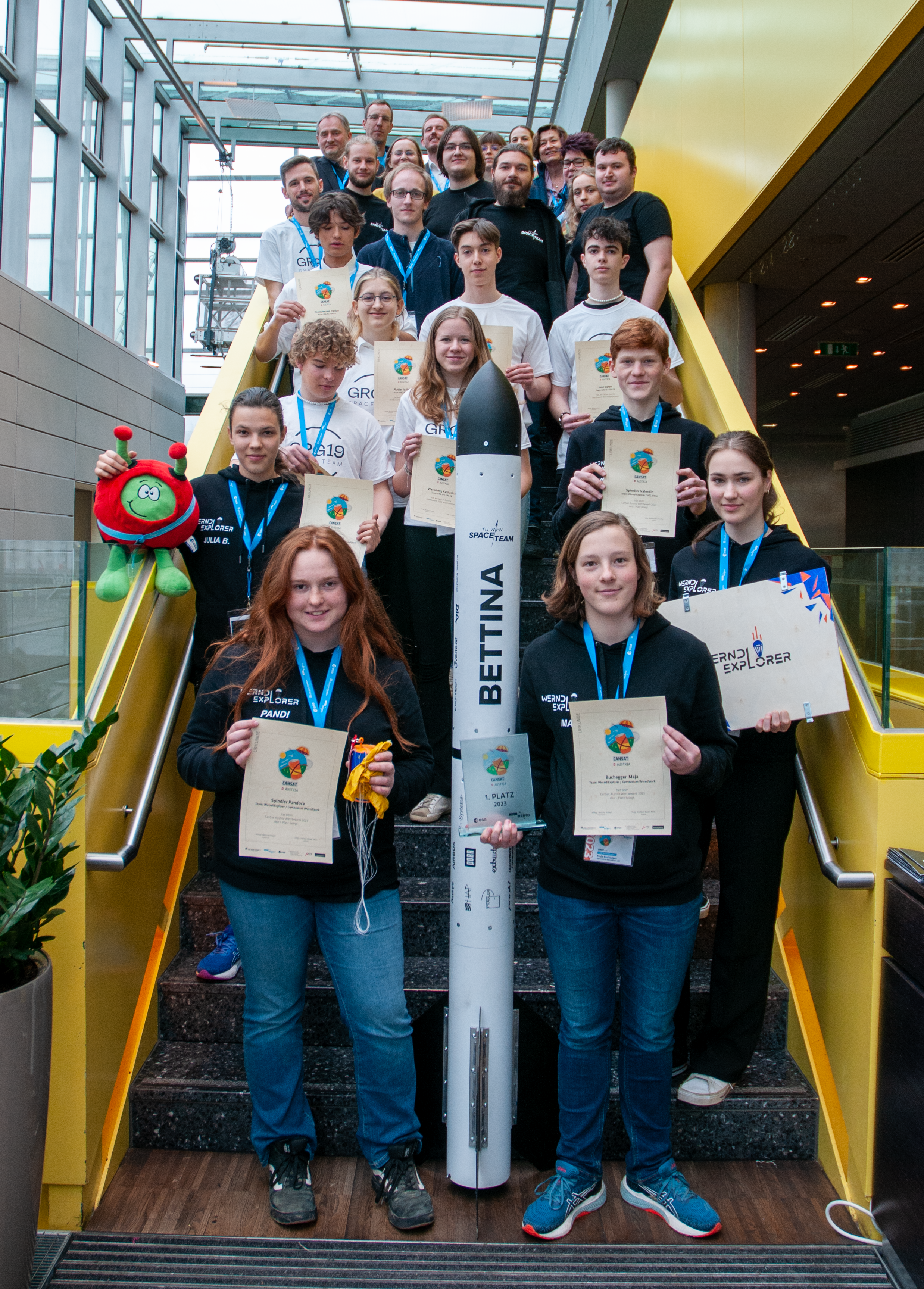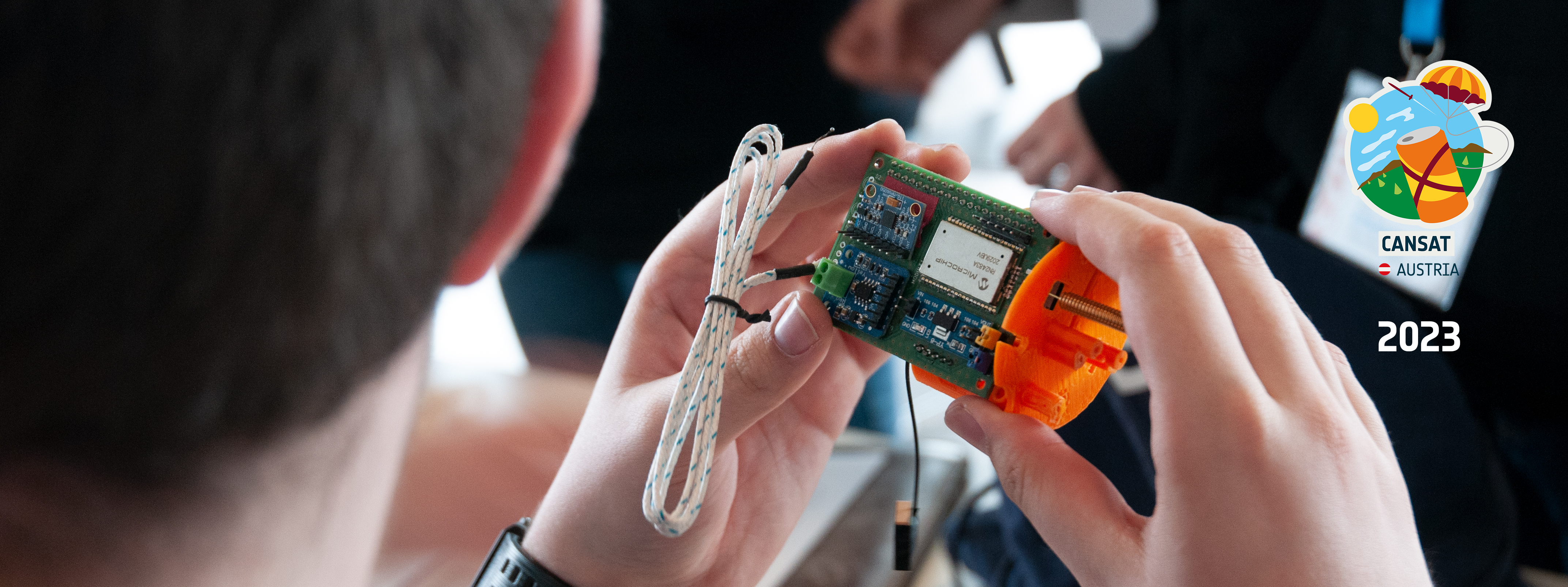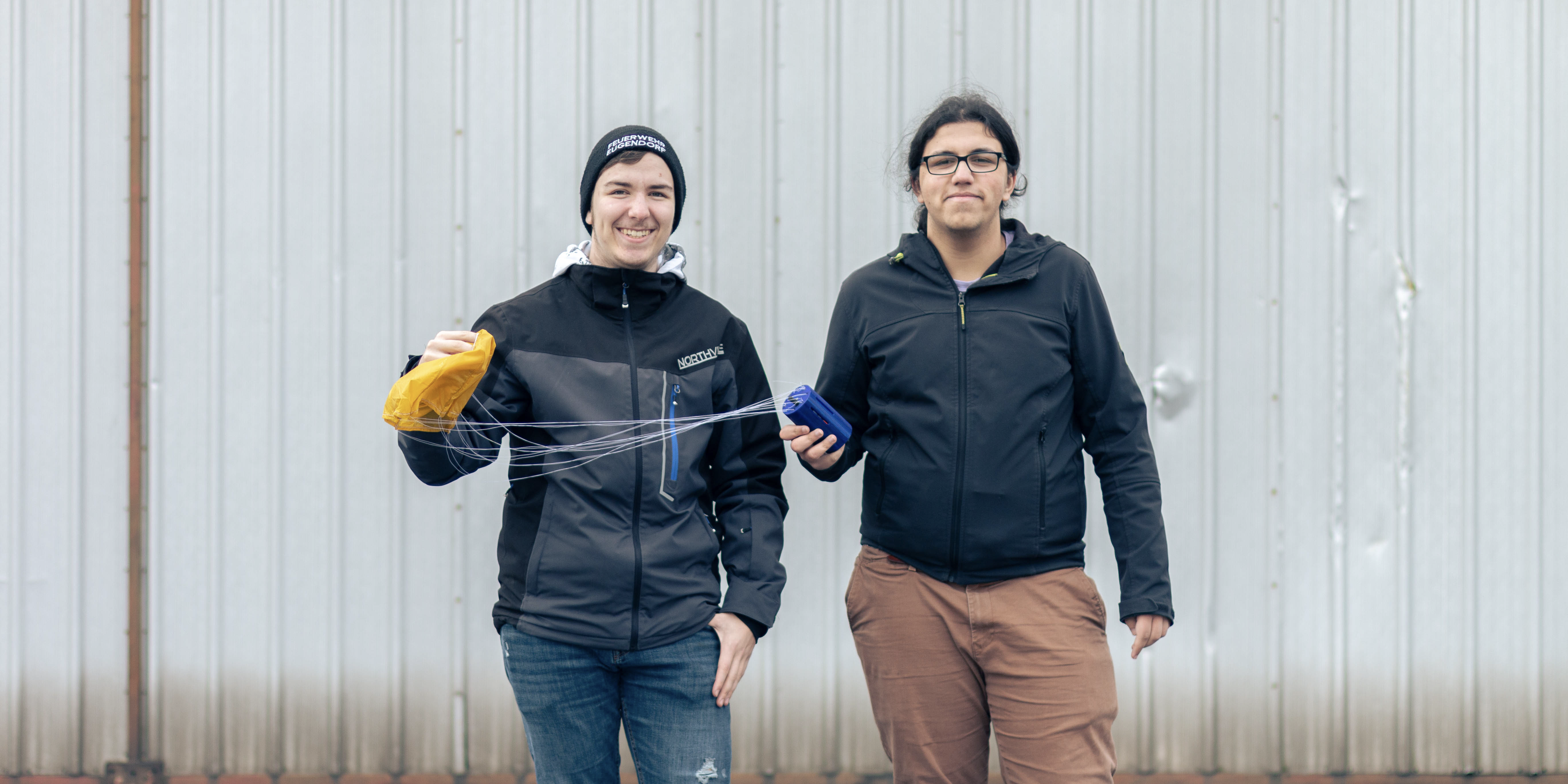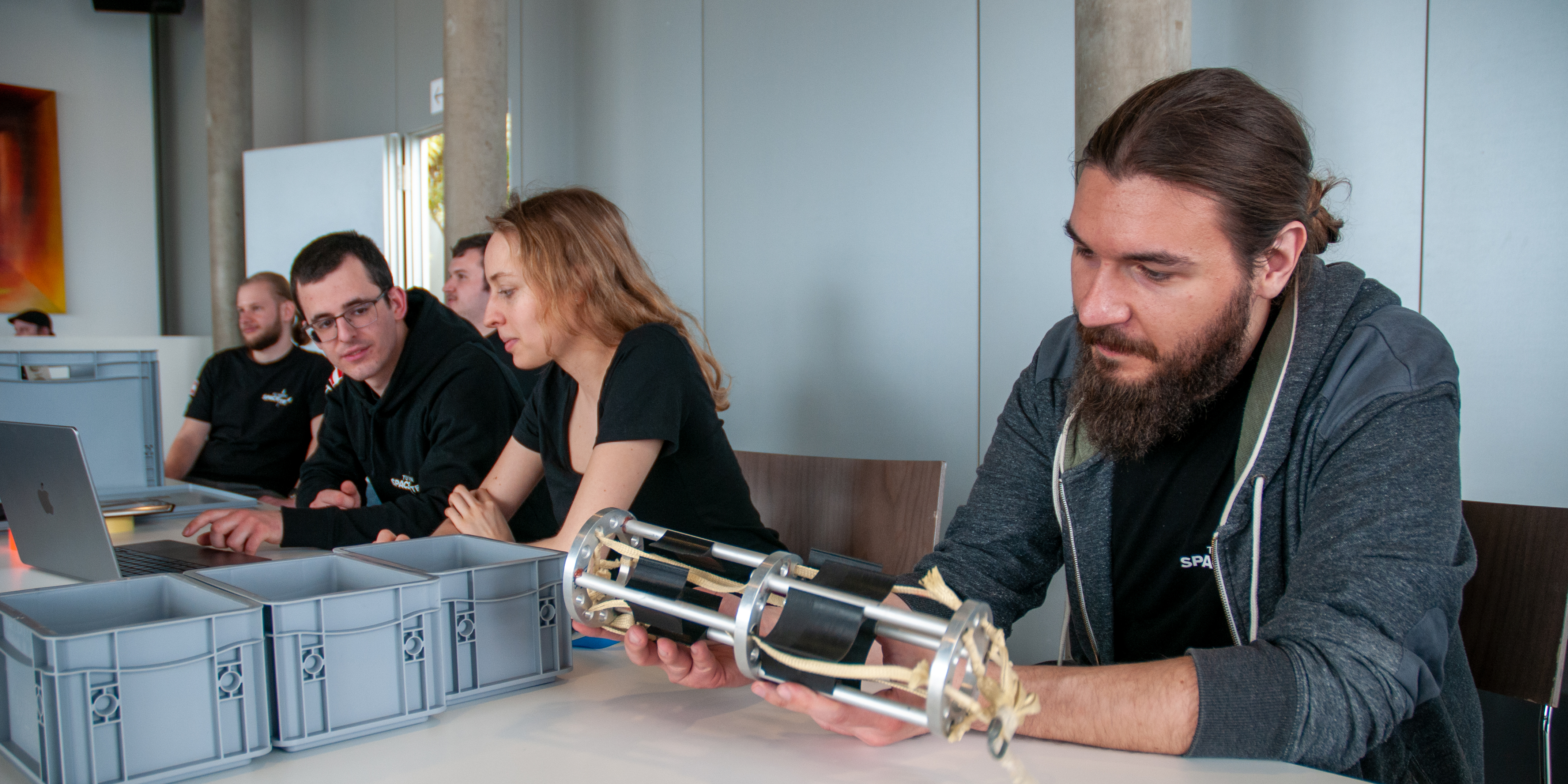Das CanSat Austria Finale 2023 war wieder Nervenkitzel pur! Hier können Sie alles nachlesen.
Auch 2023 wurde wieder hunderte Stunden gebastelt, getüftelt, geschraubt, gerechnet, programmiert, auf Social Media gepostet und anderwärtig am eigenen Mini-Satelliten gearbeitet! Am 13. April 2023 ist am Flughafen Suben erfolgreich die neue Rakete “Bettina” (benannt nach der ESERO Austria Managerin) mit den CanSats der Teams in luftige Höhen gestartet! Vielen Dank dafür an das TU Wien Space Team!
Lustigerweise haben – genau wie letztes Jahr – drei Teams aus jeweils Wien, Salzburg und Steyr am Wettbewerb teilgenommen: Team GRG 19 vom GRG 19 Billrothstraße 73, Team Helios von der HTL Salzburg, und Team WerndlExplorer vom Gymnasium Werndlpark!
Die Teams und ihre Missionen
Wie üblich bestand die Primärmission jedes Teams aus der Aufgabe, Luftdruck und Temperatur zu messen und somit ein Höhenprofil zu erstellen.
Sekundärmissionen (individuell):
Team GRG 19
Obwohl das Team der GRG 19 Billrothstraße 73 aus Wien ursprünglich noch wenig Erfahrung mit Programmierung und Elektrotechnik hatte, hat es erfolgreich einen ersten Prototyp ihres Satelliten entwickelt. Als Nebenmission planten sie die Sammlung zusätzlicher Daten, wie GPS-Position, Geschwindigkeit, CO2-Konzentration in der Luft und die Analyse von Fotos mittels einer selbst entwickelten KI. Leider gab es einige Schwierigkeiten, sodass der CanSat des Teams nicht mehr rechtzeitig für den Raketenflug freigegeben werden konnte. Unter anderem waren die Maße ihrer Satellitendose nicht korrekt. Trotz intensivster Bemühungen konnten diese Schwierigkeiten nicht mehr rechtzeitig behoben werden. Bei der Öffentlichkeitsarbeit wiederum konnte Team GRG 19 ganz besonders punkten, da sie einen ORF Beitrag zum Raketenstart organisierten! Besonders erfreulich für uns ist vor allem, dass sie vorhaben, im nächsten Jahr erneut anzutreten!
Team WerndlExplorer
Das Team WerndlExplorer besteht aus sechs Schülerinnen und Schülern des BG/BRG Werndlpark und der HTL Steyr. Bereits im Vorjahr nahm ein Teil des Teams am Wettbewerb teil, konnten die Jury jedoch nicht überzeugen, sie zum Sieger-Team zu küren. Umso mehr freuen wir uns, dass WerndlExplorer dieses Jahr wieder mit dabei war! Voller Elan und Tatendrang haben sie sich in ihre Vorbereitungen gestürzt – und es hat sich wahrlich ausgezahlt. Ihr Satellit wurde mit viel Eigeninitiative und Unterstützung ihres Betreuers Ralph Kritzinger entwickelt. Neben den vorgegebenen Messungen wollten sie auch eine fiktive Sekundärmission durchführen und die Oberfläche eines erdähnlichen Planeten B erkunden, indem sie Samen aus ihrem Satelliten freisetzten. Zusätzlich sollte der CanSat Aufnahmen von oben mit einer Kamera machen. Leider durchkreuzte ein kurzfristig aufgetauchter Bug den letzten Punkt der Sekundarmission, doch das Team fand auch für dieses Problem eine Lösung.
Team Helios
Team Helios von der HTL Salzburg hatte geplant, ein Video vom Sinkflug des Satelliten aufzuzeichnen und einen CO2 Sensor zu verwenden. Leider gab es noch vor der Anreise diverse Schwierigkeiten und auch der Droptest war nicht erfolgreich – somit war eine technische Freigabe durch das TU Wien Space Team nicht möglich. Team Helios hat sich unglaublich bemüht, ihren CanSat am Abend vor dem Raketenstart noch flugtauglich zu bekommen, doch leider klappte es nicht. Zu allem Überfluss mussten sie wegen einer sehr kurzfristig festgelegten Wiederholungsschularbeit vorzeitig abreisen.
Das Sieger*innen-Team 2023 heißt: WerndlExplorer
Im Großen und Ganzen hat alles, was sich Team WerndlExplorer vorgenommen hat, gut funktioniert. Beeindruckt zeigte sich die Jury auch ob der Problemlösekompetenz des Teams, welches kurz vor dem Finale mit einem plötzlich auftretendem Softwarebug zu kämpfen hatte. Somit wurde WerndlExplowerer dieses Jahr mit dem wohlverdienten Sieg belohnt. Auch bei der Öffentlichkeitsarbeit hat sich das Team ordentlich ins Zeug gelegt. Für die Jury, welche aus Vertreter*innen diverser Firmen und Institutionen bestand (FFG, bmk, Peak Technology, TU Wien Space Team, Technisches Museum Wien und Ars Electronica Center), war die Entscheidung dieses Jahr keine so schwierige wie letztes Jahr.

Ende Juni stand Team WerndlExplorer vor einer noch größeren Herausforderung – der europäischen Konkurrenz beim internationalen CanSat Wettbewerb der ESA! Team WerndlExplorer hat Österreich absolut großartig vertreten und den ersten Platz in der Kategorie “Outreach” belegt!
Das Team hat seine Messwerte beim Launch live und in Echtzeit vielen Interessierten und auch der Jury zugänglich gemacht. So konnten alle die Datengewinnung – über die Software “Grafana” – und den Missionsfortschritt – via Push-Benachrichtigungen – mitverfolgen! Noch nie zuvor hat ein Team so seine Daten präsentiert – das hat die Jury der ESA überzeugt.

Das war CanSat 2022/23. Genau wie letztes Jahr starteten 4 Teams aus drei Bundesländern in den Wettbewerb, von denen 3 es ins Finale schafften.
Zahlen, Daten, “Lessons Learned”?
Hier geht es zu den Abschlussberichten der Teams:





